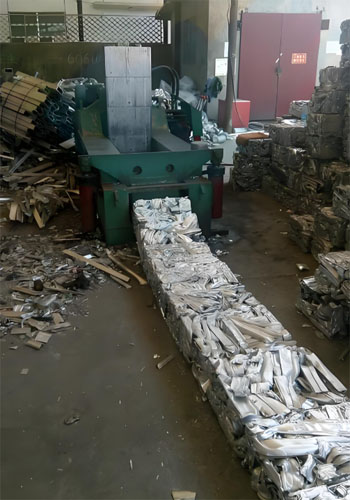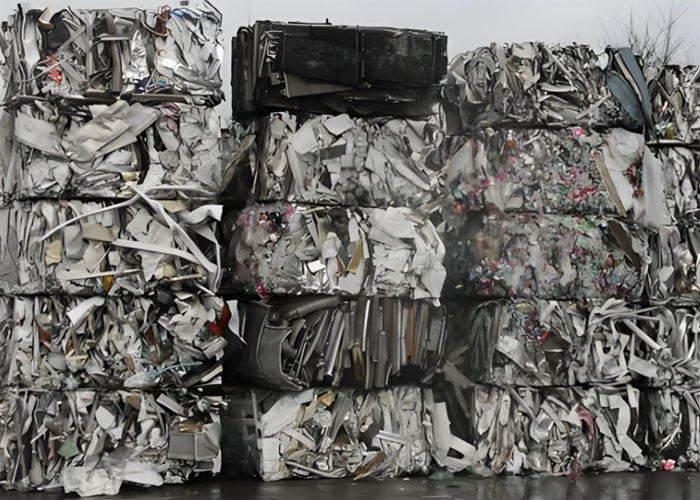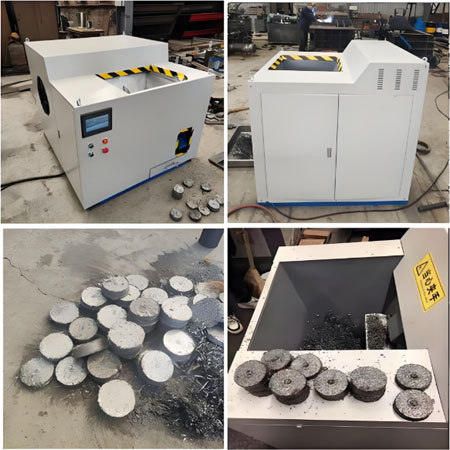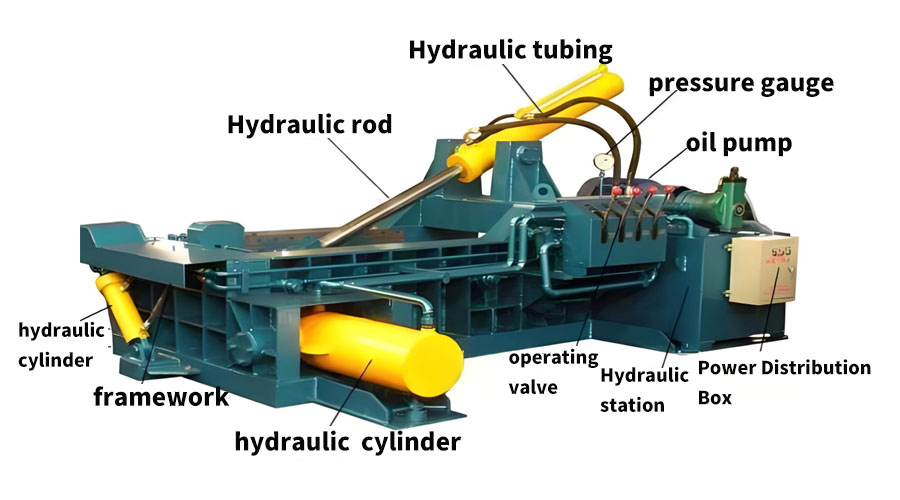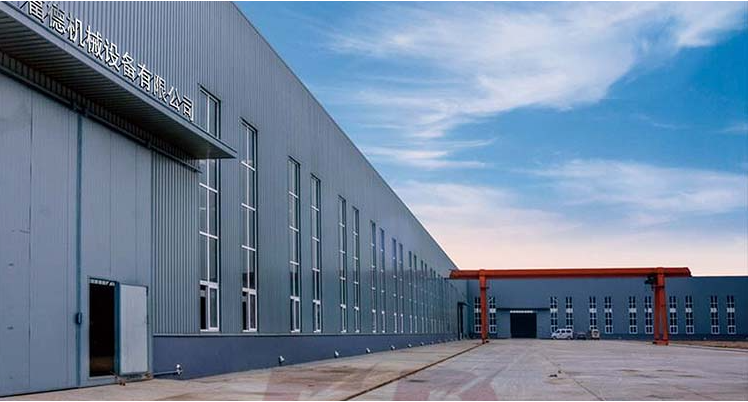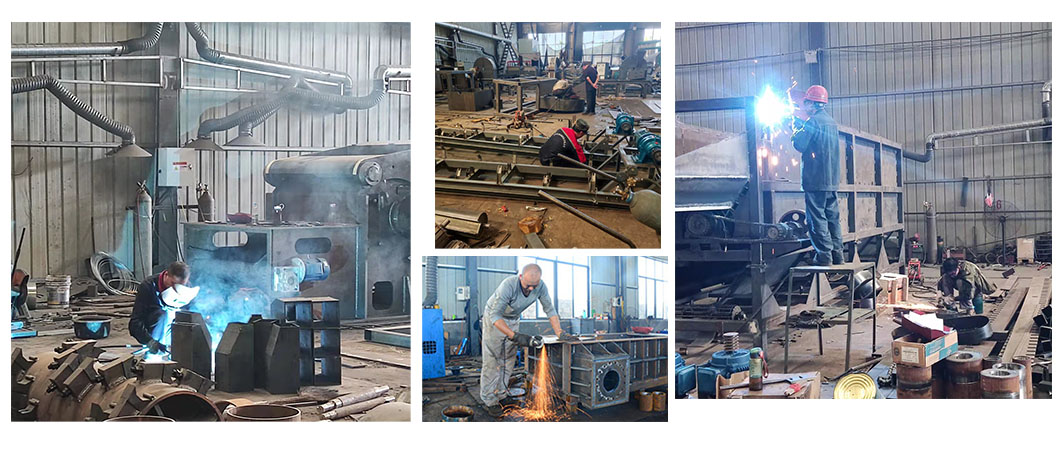Problem: Confused about scrap compression options? Agitate: Choosing the wrong machine wastes money and potential value. Solution: Understand the key difference to pick the right tool.
Choose a Baler for large, bulky scrap like car bodies or sheet metal, aiming for maximum volume reduction to save on transport. Choose a Briquetter for metal chips and turnings to create high-density pucks that increase melting value and recover fluids.
You know compressing metal scrap saves space and money. But the terms “baling” and “briquetting” often get mixed up, leading to costly mistakes. They are fundamentally different processes using different machines for different goals.
As Zhengzhou Fude Machinery, a manufacturer of both types, we want to clarify the distinctions and help you unlock the true potential hidden in your scrap pile by choosing the right technology. Let’s dive deeper than just volume reduction.
How Does Compressing Scrap Boost More Than Just Storage Space?
Problem: Seeing compression only as a floor space saver? Agitate: You’re missing out on major workflow and safety improvements. Solution: Discover how it optimizes your entire operation.
Compression creates uniform blocks, enabling safe vertical stacking, streamlining internal logistics with fewer forklift trips, reducing handling hazards, and improving overall plant safety and cleanliness significantly.
Yes, squashing scrap reduces its footprint. But the benefits go far beyond simply clearing floor space. Think about how standardized blocks transform your workflow and environment.
Skyrocket Your Storage Capacity
Loose scrap is bulky and unstable. You can’t stack it high. Compressed bales or briquettes, however, are dense and uniform.
- Vertical Gains: They can be safely stacked much higher, often doubling or tripling your storage capacity within the same area. This frees up valuable space for production or other activities.
Streamline Internal Logistics
Moving loose scrap is inefficient and messy. Compressed blocks change that.
- Fewer Trips: Forklifts can carry significantly more weight per trip because the material is dense. This means fewer movements, saving time, fuel, and labor.
- Clearer Pathways: Reduced scrap footprint means wider, safer aisles for personnel and equipment movement, improving overall plant flow.
Enhance Safety and Environment (EHS)
Loose scrap, especially sharp turnings, poses risks. Compression mitigates these.
- Reduced Hazards: Eliminates tripping hazards and the risk of cuts from handling sharp, tangled metal.
- Cleaner Workspace: Contains dust and minimizes spills of residual cutting fluids, contributing to a cleaner, healthier work environment. This is increasingly important for meeting strict Environmental, Health, and Safety (EHS) standards.
What’s the Real Key to Slashing Scrap Transport Costs?
Problem: Facing high bills for hauling away scrap? Agitate: You might be paying to transport mostly air inside the truck. Solution: Maximize the weight per load through high-density compression.
The secret is loading trucks closer to their maximum weight limit, not just filling their volume. High-density bales or briquettes achieve this, drastically cutting the number of trips needed and the transport cost per ton.
Reducing the number of transport trips is a major goal of scrap compression. But the effectiveness hinges on one crucial factor: density. You need to think about truck capacity in terms of weight, not just space.
Volume vs. Weight: The Critical Difference
A standard truck trailer has both a volume limit and a weight limit (payload capacity).
- The Loose Scrap Problem: Light, fluffy scrap like aluminum turnings might fill the entire truck volume long before reaching the weight limit. For instance, a truck rated for 30 tons might only hold 3-5 tons of loose aluminum chips. You pay for a full truck but ship mostly air.
- The Compression Solution: Compressing that aluminum into dense briquettes (increasing density by 10x or more) allows you to load 25 tons or more onto the same truck.
Calculating the Savings
By maximizing the payload weight per trip, you dramatically reduce the total number of trips required.
- Example: Instead of needing 6-10 trucks for 30 tons of loose aluminum, you might only need one or two trucks for the same amount of briquetted aluminum.
- Impact: The cost per ton transported can plummet, potentially dropping by 80% or more. This saving is especially significant for long-distance or international shipments.
- Density Matters: Remember, if the compression density achieved is low (due to the wrong machine type or insufficient pressure), the transport savings will be much less impressive.
How Do Briquetters Directly Increase Scrap’s Monetary Value?
Problem: Treating valuable metal chips as low-grade waste? Agitate: Significant profit is lost through melt burn-off and discarded fluids. Solution: Briquetting boosts intrinsic value through higher yield and fluid recovery.
Briquetters create high-density pucks that minimize metal loss during melting, boosting yield significantly. They also squeeze out valuable cutting fluids for reuse, adding another direct revenue stream or cost saving.
While balers primarily save money on handling and transport, briquetters directly increase the intrinsic value of metal chips and turnings in several ways. This is especially true for machine shops and foundries.
Dramatically Reduce Melting Loss
This is often the biggest financial gain.
- The Science: Loose chips have a huge surface area relative to their volume. When added to a furnace, this surface area oxidizes rapidly (burns off) before the metal melts, especially for reactive metals like aluminum or magnesium. High-density briquettes have much less surface area, sink quickly below the slag layer, and melt with significantly less oxidation.
- The Payoff: Burn-off reduction can easily be 50% or more. This means several percentage points higher metal recovery yield. More metal sold from the same amount of scrap equals direct profit. Foundries recognize this and often pay a premium for high-density, low-loss briquettes.
Recover Expensive Cutting Fluids
This is a unique benefit of high-pressure briquetting.
- The Process: Briquetters can exert immense pressure (often >3000 psi) to squeeze out up to 95% or more of residual cutting oils and coolants trapped within the scrap.
- The Savings: These fluids, especially high-performance synthetic coolants, can be expensive. Recovering and purifying them for reuse directly reduces purchasing costs. Note: The recovered fluid contains fines and needs a proper filtration/purification system (centrifuge, filters) – factor this into your ROI calculation.
Command Purity Premiums
Clean, source-separated scrap is always more valuable.
- Single-Material Briquettes: Processing different metal types (like aluminum, steel, copper) separately into pure briquettes allows them to be sold at higher prices compared to mixed or unprocessed scrap.
So, When Do I Absolutely Need a Baler vs. a Briquetter?
Problem: Still feeling uncertain about which machine truly fits your needs? Agitate: Investing in the wrong technology leads to inefficiency and regret. Solution: Clearly match the machine to your specific scrap type and primary objective.
Get a Baler if you handle large, bulky scrap (vehicles, appliances, sheet offcuts) and your main goal is reducing volume for easier handling and cheaper transport. Get a Briquetter for fine chips, turnings, or powders to maximize melting value and recover cutting fluids.
The choice between a baler and a briquetter comes down to two simple questions: What kind of scrap do you have? And what is your primary goal? Let’s clearly define the roles.
Choose a Metal Baler If:
- Your Scrap: Is large, voluminous items like end-of-life vehicles (ELVs), white goods (appliances), sheet metal skeletons, stampings, light iron, aluminum siding, or large quantities of UBCs (Used Beverage Cans).
- Your Goal: Is primarily to compress this bulky material into dense, uniform bales for efficient storage, handling, and drastically reduced transportation costs. Metallurgical value improvement is secondary to volume reduction.
- Typical Users: Scrap metal recycling yards, steel mill scrap processing departments, vehicle dismantling facilities, large fabrication plants managing bulky offcuts, can recycling centers.
Choose a Metal Briquetter If:
- Your Scrap: Consists of small metal chips, turnings, filings, or powders generated from machining operations (milling, turning, drilling) involving materials like steel, cast iron, aluminum, copper, brass, titanium, etc.
- Your Goal: Is primarily to create very high-density pucks or blocks to significantly reduce burn-off loss during remelting, recover valuable cutting fluids trapped in the scrap, and improve handling and furnace charging efficiency. Transport savings are a benefit, but maximizing material value is key.
- Typical Users: Machine shops (especially automotive, aerospace), foundries (particularly aluminum, copper, cast iron), manufacturers with significant machining operations, specialized metal chip processing companies.
Mixing these up is a fundamental error. Trying to bale fine chips won’t achieve the density needed for good melting results. Trying to stuff a car body into a briquetter is impossible. Purpose dictates the technology.
What Truly Matters When Selecting a Scrap Compression Machine?
Problem: Getting focused only on the advertised tonnage rating? Agitate: Ignoring machine suitability, reliability, and support leads to long-term headaches. Solution: Prioritize real-world testing, density achievement, automation needs, and robust construction.
Look past simple tonnage. Test the machine with your scrap. Focus on achieving the required final density (psi/kg/cm² matters). Evaluate automation ROI. Critically assess structural integrity, hydraulic quality, wear parts, cooling, and supplier support for long-term success.
Selecting the right baler or briquetter involves more than just comparing basic specifications like motor power or main cylinder force (tonnage). Here’s what experienced operators and we, as manufacturers, focus on:
1. Material Characteristics First
- Test Your Scrap: The single most important step! The type of metal, chip size/shape, moisture/oil content, and hardness drastically affect how it compresses. Always try to test run your typical material on a potential machine. What works for dry aluminum chips might fail with wet, stringy stainless steel. There’s no “one size fits all.”
2. Density is King (Especially for Briquetters)
- Focus on Pressure & Results: Don’t be solely swayed by tonnage. The pressure applied over the briquette’s surface area (psi or kg/cm²) and the resulting density are what count, particularly for melting value. Ask for density specifications and verify with samples.
3. Capacity and Automation Needs
- Match Throughput: Choose a machine rated for your scrap generation rate (tons/hour).
- Evaluate Automation: Consider the cost vs. benefit of automated feeding (conveyors, hoppers) and discharge systems. Automation reduces labor costs and increases throughput but requires higher initial investment. Calculate the payback period for your specific operation.
4. Reliability and Maintenance (The Long Game)
- Build Quality: Look for heavy-duty construction, especially in the press frame and mold/chamber components that bear the load.
- Hydraulic System: This is the machine’s heart. Quality components (pumps, valves, cylinders – brands like Rexroth, Parker, Eaton are often reliable indicators) and proper system design are crucial. Effective cooling (air or water) is vital for continuous operation without overheating.
- Wear Parts: Molds and liners wear out. Ask about the materials used (e.g., hardened tool steels), expected lifespan with your material, and replacement cost/availability.
- Supplier Support: Consider the manufacturer’s reputation, warranty, availability of service, and spare parts supply. Downtime is expensive.
Investing wisely means looking at the total cost of ownership, not just the purchase price.
Conclusion
Choosing correctly between a baler and briquetter, based on your scrap and goals, unlocks significant operational and financial benefits far beyond just saving space. Understand the differences, focus on real-world performance, and invest wisely.
Fude Machinery has always been committed to providing high-quality and high-performance metal equipment solutions to global customers. With advanced production technology, strict quality control, and continuous innovative research and development capabilities, it has received satisfactory praise from customers.
 Fudemetal Crusher
Fudemetal Crusher
